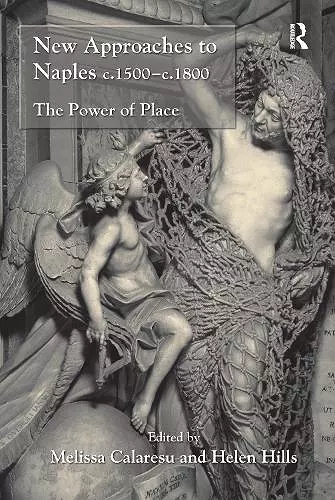New Approaches to Naples c.1500-c.1800
The Power of Place
Helen Hills author Melissa Calaresu editor
Format:Hardback
Publisher:Taylor & Francis Ltd
Published:31st Oct '13
Currently unavailable, our supplier has not provided us a restock date
This hardback is available in another edition too:
- Paperback£38.99(9781032923611)

Early modern Naples has been characterized as a marginal, wild and exotic place on the fringes of the European world, and as such an appropriate target of attempts, by Catholic missionaries and others, to ’civilize’ the city. Historiographically bypassed in favour of Venice, Florence and Rome, Naples is frequently seen as emblematic of the cultural and political decline in the Italian peninsula and as epitomizing the problems of southern Italy. Yet, as this volume makes plain, such views blind us to some of its most extraordinary qualities, and limit our understanding, not only of one of the world's great capital cities, but also of the wider social, cultural and political dynamics of early modern Europe. As the centre of Spanish colonial power within Europe during the vicerealty, and with a population second only to Paris in early modern Europe, Naples is a city that deserves serious study. Further, as a Habsburg dominion, it offers vital points of comparison with non-European sites which were subject to European colonialism. While European colonization outside Europe has received intense scholarly attention, its cultural impact and representation within Europe remain under-explored. Too much has been taken for granted. Too few questions have been posed. In the sphere of the visual arts, investigation reveals that Neapolitan urbanism, architecture, painting and sculpture were of the highest quality during this period, while differing significantly from those of other Italian cities. For long ignored or treated as the subaltern sister of Rome, this urban treasure house is only now receiving the attention from scholars that it has so long deserved. This volume addresses the central paradoxes operating in early modern Italian scholarship. It seeks to illuminate both the historiographical pressures that have marginalized Naples and to showcase important new developments in Neapolitan cultural history and art history. Those developments showcased here include bot
'... succeeds in addressing a number of pertinent issues ... provides a significant contribution to the study of Naples’s cultural history, because of the insights it provides, but even more so because of the questions it raises.' Renaissance Quarterly 'It will be hard to find a more qualitative and broad-ranging set of new studies on Naples, in which the contributors not only display a lucid understanding of the existing scholarly lacunae in the field, but also make a serious attempt to fill those by offering original, interdisciplinary and balanced accounts. The book will be of obvious interest to scholars of Naples, the Italian peninsula, early modern Europe and the Spanish Empire, but it will also be of relevance to anyone wishing to keep abreast of cutting-edge research in urban, cultural and art history.' Urban History 'This excellent book benefits from a high production value, including seven color plates, and that is likely to contribute to its deserved success.' Sixteenth Century Journal
ISBN: 9781409429432
Dimensions: unknown
Weight: 690g
286 pages